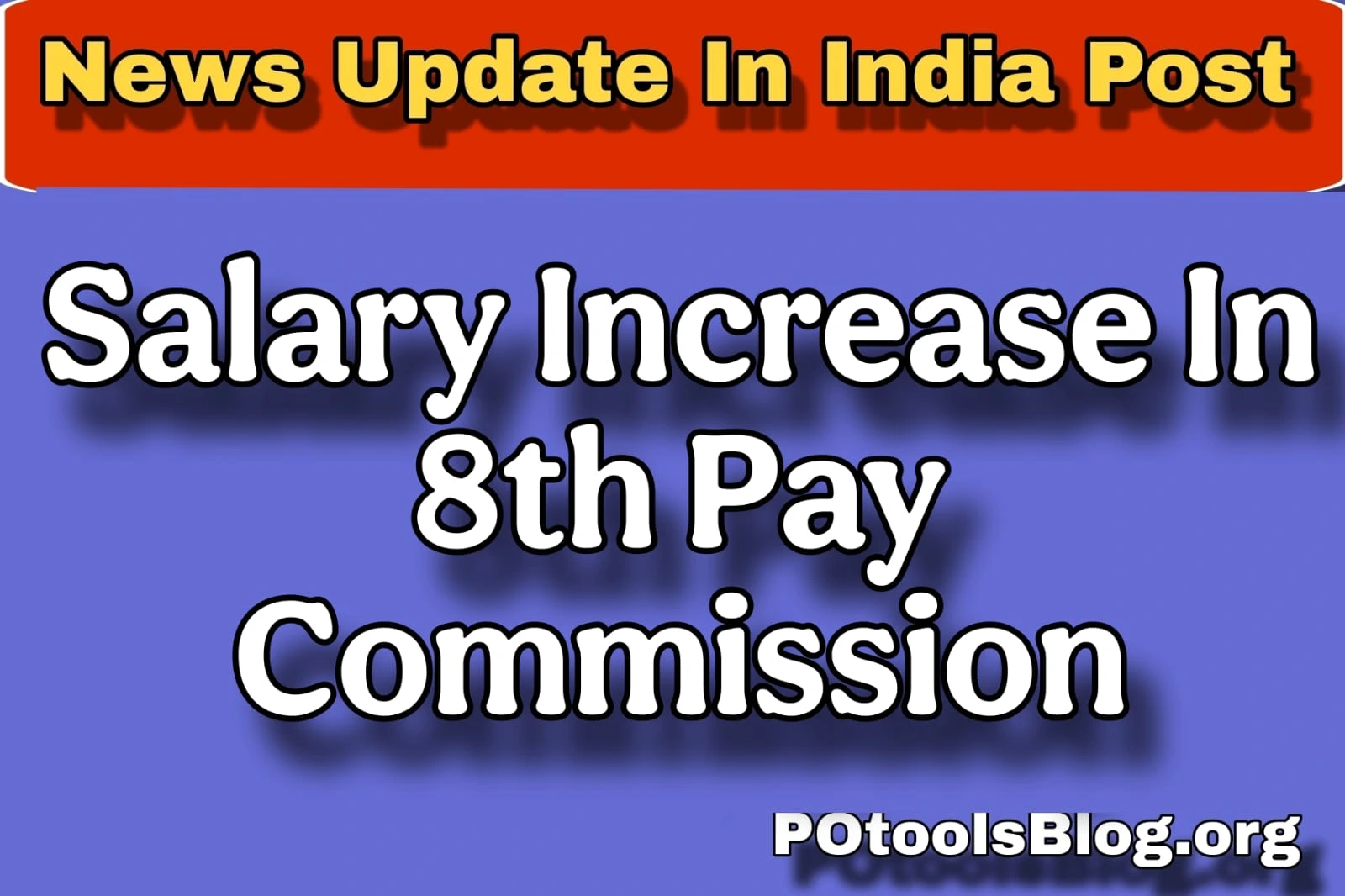For Indian central government workers and retirees, the 8th pay commission is expected to bring significant financial adjustments. Salary and pension reforms proposed by the panel are set to take effect on January 1, 2026, to bring them in line with the state of the economy.
This blog investigates the predicted pay increase, important advice, and general influence of the 8th Pay Commission.
Salary Hike: What to Expect?
The expected rise in the minimum basic pay of the 8th Pay Commission is one of the most talked about features of it. Reports point to a significant increase from the present ₹18,000 to maybe ₹41,000.
A critical calculation that multiplies the current basic pay to determine the revised compensation is the proposed fitment factor, which is the basis for this increase. The eighth pay commission is considering a fitting factor of 2.28.
To put this into perspective:
- Current Minimum Salary (7th Pay Commission): ₹18,000
- Proposed Minimum Salary (8th Pay Commission): ₹41,000
- Percentage Increase: 34.1%
Employees should anticipate a more substantial increase from the anticipated 8th Pay Commission raise, which would tackle inflation and rising living expenses, in comparison to the 14.29% minimum basic pay hike that came from the 7th Pay Commission’s fitment factor of 2.57.
Impact on Pensions
Additionally, retirees may look forward to significant benefits from the 8th Pay Commission. The suggested fitment ratio is 2.86, which means that the minimum basic pension may go up to ₹25,740 per month, from the present ₹9,000 per month.
An astounding 186% increase is being made here. Furthermore, it is anticipated that the maximum pension would increase from 1,25,000 to more than 3,57,500 per month.
Retired government personnel will have a higher quality of life in retirement thanks to these modifications, which will provide improved financial stability. Those receiving pensions as a means of subsistence would gain substantially from the planned increase.
Comparison with the 7th Pay Commission
It is necessary to review the suggestions made by the 7th Pay Commission to comprehend the alterations proposed by the 8th Pay Commission. A quick comparison is this:
| Features | 7th Pay Commission | 8th Pay Commission (Expected) |
| Implementation Date | January 1, 2016 | Expected on January 1, 2026 |
| Minimum Salary | ₹18,000 | ₹41,000 (up to ₹51,480) |
| Fitment Factor | Ranges from 2.57 to 2.81 | A proposed single factor of 2.28 |
| Salary Increase | Approx. 14.29% | Estimated between 20% to 35% |
| Dearness Allowance | Periodic revisions | Expected to boost retirement benefits by up to 30% |
| Minimum Pension | ₹9,000 | Potential increase of ~30% |
| Gratuity Ceiling | ₹20 lakh | Yet to be defined |
| Economic Considerations | Focus on inflation and economic growth | Broader assessment including inflation, market prices, and employee needs |
| Consultation Process | Consulted with stakeholders, and faced criticism | Plans for broader consultations with unions and governments |
| Overall Impact | Aimed at financial stability with limited salary flexibility | Designed to offer more benefits, addressing current economic pressures |
The comparison highlights the substantial differences between the two commissions, with the 8th Pay Commission’s proposals aiming to provide more significant financial relief.
Factors Influencing the 8th Pay Commission Recommendations
The Pay Commissions evaluate several factors to determine salary and pension adjustments. For the 8th Pay Commission, the following aspects are expected to shape the recommendations:
- Cost of Living Inflation: Government workers need wage increases to keep up with the rising cost of living as a result of inflation.
- Talent Retention in Public Service: To attract and retain trained talent in public service positions, it is essential to establish a competitive pay structure. Achieving this equilibrium is the goal of the proposed compensation increases.
- Comparing the Public and Private Sectors: Salaries in the public sector are typically lower than those in the private sector. By bridging this divide, the commission’s recommendations are intended to increase the appeal of government employment.
- Pay Structure Simplification: It is anticipated that the 8th Pay Commission will prioritize the development of a pay structure that is both rational and straightforward, and that is consistent with the qualifications and responsibilities of employees.
- Budget Allocations and Economic Development: The amount of wage and pension rises would be heavily influenced by India’s economic development. For these increases to be feasible, the government must set aside sufficient funds.
Conclusion
Salary structures for government workers and retirees will undergo radical revisions as a result of the 8th Pay Commission. Aiming to confront the changing economic situation, the guidelines propose substantial increases to basic incomes and pensions to enhance financial stability.
The government’s dedication to supporting its workers and achieving a higher quality of life for everyone is evident in the expected statistics, even though the final recommendations have not been approved.

